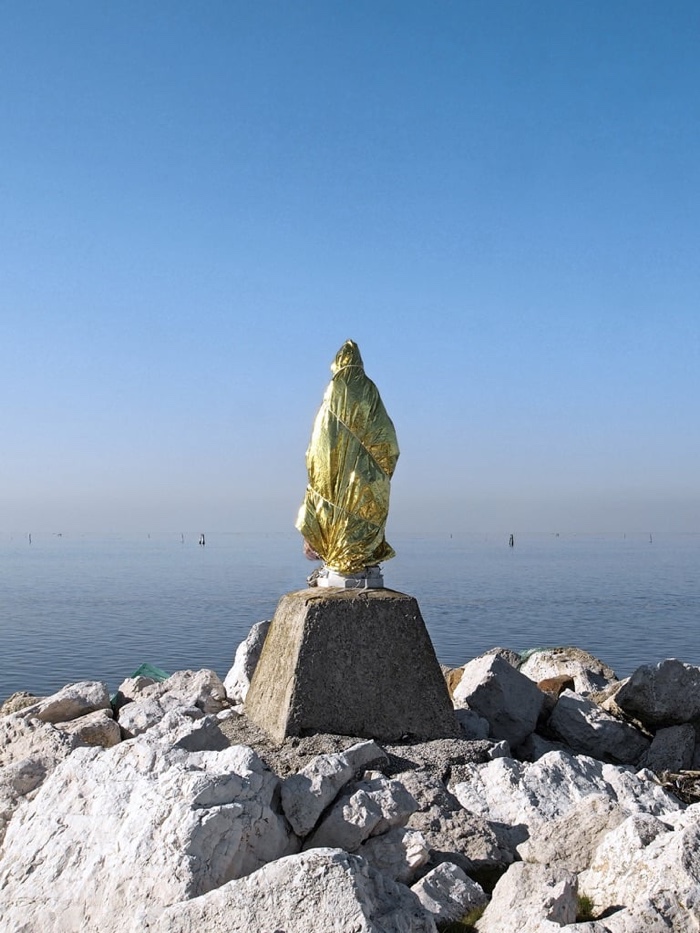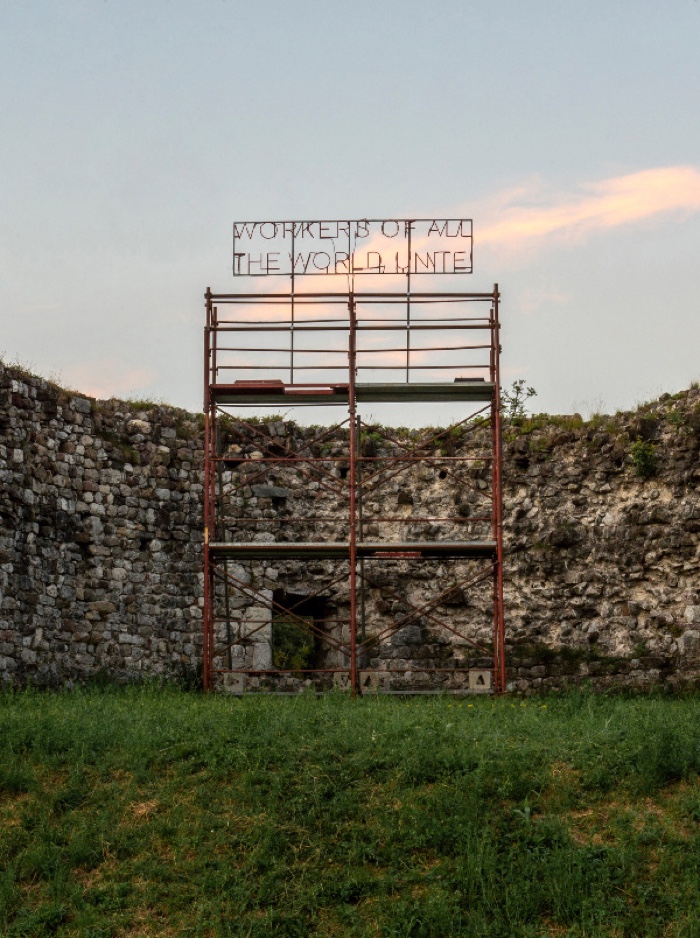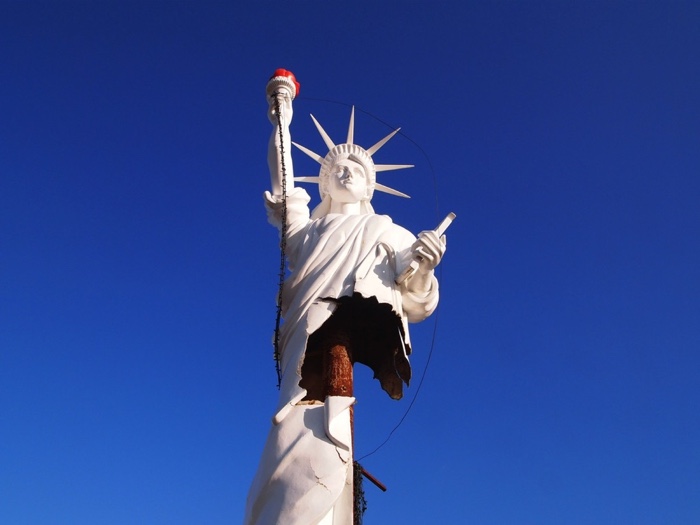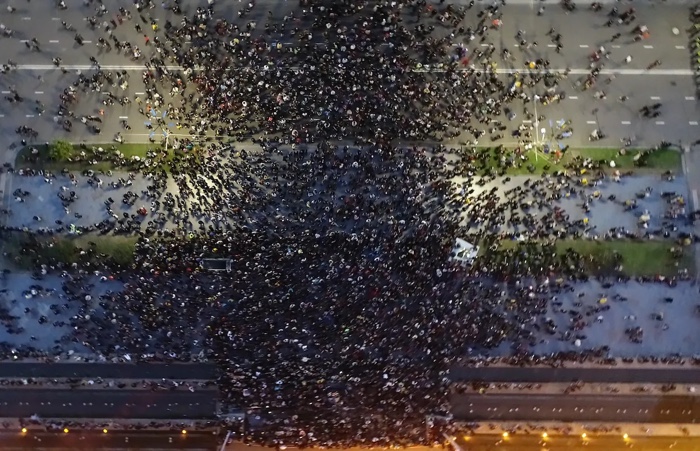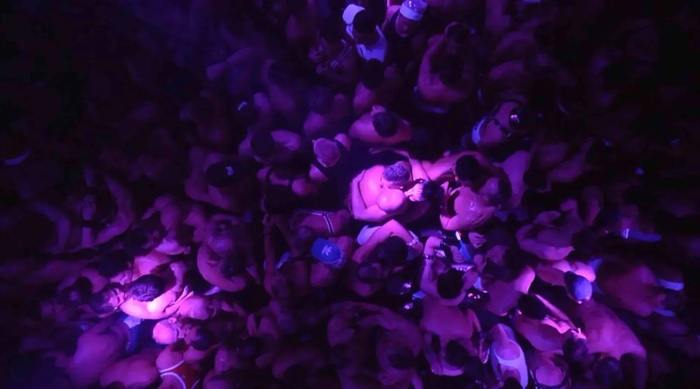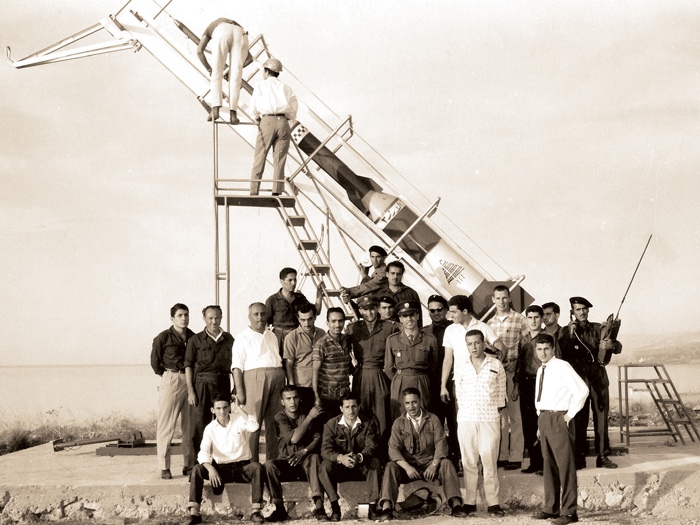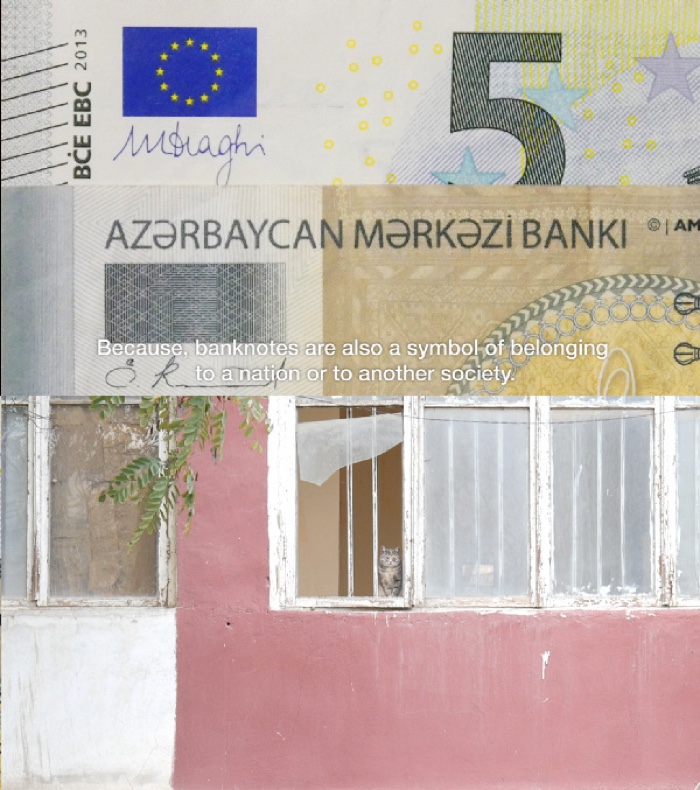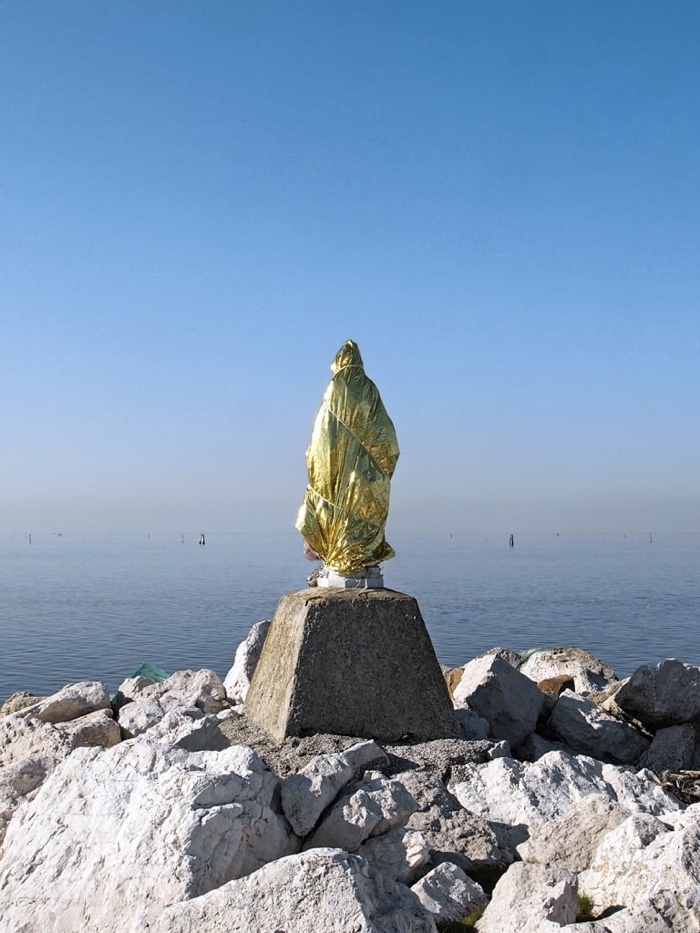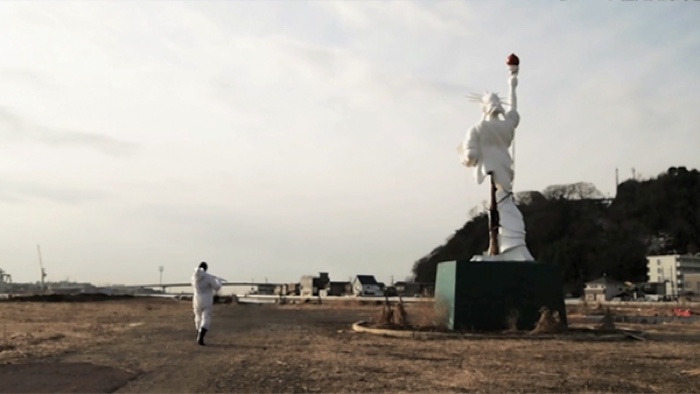Review of the book Works Fall True. Selected works by Ryts Monet. Edited by Francesco D’Abbraccio, Andrea Facchetti, Andrea Catherine Steves. Published by Krisis Publishing. Texts in both English and Italian.
The publisher explains that the book is “embarking on a Warburgian investigation into the shifts of narrative devices following the downfall and disintegration of the empires and ideologies that shaped them.” I’ll never get back the time i spent trying to understand what “Warburgian” means exactly in this context. I googled the term. Repeatedly and frantically. The precise meaning of the adjective remains elusive. But i digress…
Ryts Monet, WORKS FALL TRUE!, 2020
The title of the book alludes to Ryts Monet‘s red neon sign installed on top of the hill in Fagagna, Northeast Italy. During the day, the installation reads WORKERS FROM ALL THE WORLD, UNITE!, a take on the famous Communist slogan. During the night, only a few letters of the inscription light up and the slogan reads: WORK S F ALL T R U E!
It looks like a public sign, beautiful but neglected and never fixed. Mangled but not beyond repair. Just like international workers solidarity?
Ryts Money, Amaterasu, Goddess Of Sun, 2013
The texts collected in the book bring Monet’s installation and its atmosphere of collapse and decay into the geopolitical sphere. With a tiny bit of hope here and there. Throughout the book, thinkers, artists, activists, philosophers reflect on monuments, images, geopolitics, revolution, ruin, Europe, myths, freedom, democracy, capitalism, obsolete ideals, intellectual sopor, etc. Topics that look variegated but remain pertinent in their analysis of how the remnants of utopias and ideologies of the 20th century continue to disrupt and interact with contemporary culture, capitalism and the environment.
Ryts Monet, The Hidden Side of the Moon, Casa degli Specchi, 2012
Ryts Monet, The Hidden Side of the Moon, Flyng Carpet, 2015
The text content is dense and never dull. I was expecting a monograph of Ryts Monet’s work but it is far more interesting than that. Works Fall True is more like an anthology of exciting ideas and challenging positions that stimulated Monet’s mind. There are essays, fragments and extracts from thinkers but also interviews with other artists. Not all artists are that generous with their peers.
Here’s a few notes on some of the texts i particularly enjoyed:
Irmgard Emmelhainz writes about the poisonous legacy of modernism: capitalism that thrives on destroying whole ecosystems and groups of “redundant” people who survive in intolerable situations to sustain the privileges of people living in prosperous enclaves. Referring to one of Jodi Dean’s essays, Emmelhainz also describes how social media have downgraded protests to their mere representation via codes, likes, shares, memes and retweets. By moving our dissent to capitalist communication platforms, we are effectively impairing any insurrection against colonialism and imperialism.
Bogomir Doringer, Ravelution in Tbilisi, 2019
Bogomir Doringer, I Dance Alone filmed at Funhouse, Amsterdam, 2014
Elsewhere, Mariana Berezowska, editor in chief of Borshch magazine, has a fascinating conversation with artist slash researcher Bogomir Doringer about the power of collective mindsets to face hardship. The exchange of views starts with an exploration of Doringer’s research project Dance of Urgency which investigates how, in the context of crises, dancing gathering becomes a coping mechanism, empowering individuals and groups to navigate challenging periods. While discussing an example of that type of resilience, Berezowska expressed her concern that the narrative of ‘resistance’ and ‘struggle’ might get overused or appropriated when Western media start producing content about the culture in Ukraine in the midst of the Russian invasion.
The Lebanese Rocket Society, comprised mainly of Armenian students from Haigazian University. Photo: AGBU Nubar Library
Joana Hadjithomas and Khalil Joreige chronicle the film and accompanying works they made about the Lebanese Rocket Society, an extraordinary scientific research project developed by a physics teacher and his students in the 1960s. When Joreige and Hadjithomas started researching its history in the early 2010s, everyone had forgotten about Lebanon’s space experiments. The adventure was simply erased from individual and collective memory. Which made them wonder: Facing this absence, how can this story be told in the present? What would it mean today to think about this forgotten story and reconstitute part of it? What does it mean to reproduce the gestures of the past today?
The book also republishes a text that Asia Bazdyrieva wrote in April 2022, shortly after Russia launched its attack on Ukraine. She lays bare the long story of the extraction, exploitation and discrimination of Ukraine by both Russia and Western European countries. Her words hit hard. Unfortunately, I see no reason to contradict the brutality of her analysis.
Ryts Monet, Der Euro das Kaukasus (The Euro of the Caucasus), 2020
Another highlight was the conversation between Ryts Monet and Robert Kalina, the graphic designer who, in 1996, won the competition held by the European Monetary Institute (now the ECB) to design the first Euro banknote series. Kalina has since been asked to design the banknotes for the Azerbaijani manat. One of the requirements was that the manat needed to bear a formal resemblance to the Euro while referring to the culture and history of Azerbaijan, a country that shows little interest in joining the EU. The anecdote is the starting point for exchanges between Kalina and Monet about the role of currency imaginary in shaping national identity.
I also enjoyed the conversation between Monet and Bernhard Tuider, the director of the Esperanto Museum in Vienna. They talk about how during the Cold War Esperanto carved out a space between Russian-speaking and English-speaking blocks. The exchange also briefly reflected on the possible significance of Esperanto in a world shaped by post-globalisation trends and where regionalism and nationalism are on the rise.
Ryts Monet, Goddess of Sun, 2014
Ryts Monet, THE MAGIC PIPER OF ISHINOMAKI, stillS from video, 2014
By that point, you might think that the book is morose. Don’t despair! First, the texts are accompanied by photos of Monet’s works and most of them are not without irony and humour. Second, there is Franco Bifo Berardi‘s text about The Second Coming of Communism which “will happen as an effect of the trauma that capitalism (and the capitalist use of technology) has inflicted on the human mind.” The philosopher urges us to never stop exercising the art of thinking and the art of philosophical imagination, even in these times of despair and trauma.
Internationalism is not a moral value nor an ideology, but the materialist understanding of a simple fact: the workers of the world share a common interest, which is having more of what they produce, and working less.
A new division of labor time must urgently be developed. The goal is not to defend the existing composition of labor, but to disentangle the possibility of a new one, to emancipate the general intellect, to liberate the power of science, technology, and art from the limits of our language, from the limits of the superstition of work.
We must shift the focus of our theoretical attention from the sphere of politics to the sphere of neuroplasticity. We must create technical platforms to enable a neurological reshuffling of the general intellect.
It’s not every month that i end a story on an uplifting note. Better end the review here, then!
